#semolina sweet recipe
Text
Eggless Tropical Mango Trifle Pudding... dreamy desserts for summer!
Eggless Tropical Mango Trifle Pudding … with semolina and coconut flavouring the cake, this eggless trifle is delicious and dreamy. It has beautiful tropical tones with mango adding the oomph and freshness a summer dessert calls for!
Mango is my most favourite thing about the Indian summer. The king of fruits as mango is rightly called gives us far too much happiness in the subcontinent. With…
#baking#coconut cake#dessert#desserts for summer#eggless#eggless mango trifle#eggless suji cake#food#holiday baking#Indian summer dessert#Mango#mango cream#Recipes#semolina cake#simple desserts#suji cake#summer desserts#sweet#tropical#tropical dessert#vegetarian
0 notes
Text
[ Original Twitter Thread by @/beelektra ] - Not by Magz, am not Palestinian
Palestinian Foods. (long post)
Quote:
"🧵 Thread of Palestinian desserts I've grown up around and seen A thing I'd like to add is that I just like to share my culture! I do not want to spread the narrative that our culture is dying, I only want people to see our foods and traditions 🇵🇸
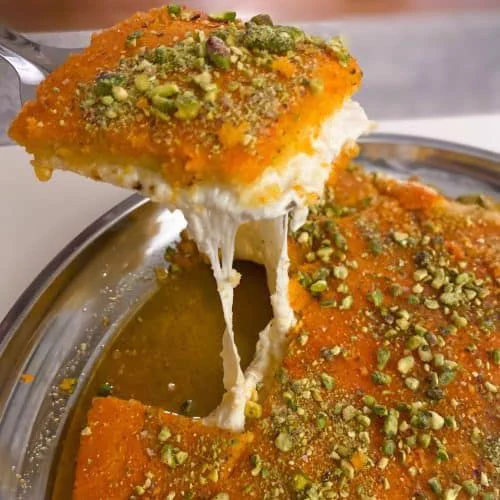
"As mentioned in the last post, we have knafeh (or kunafa), a buttery dessert made with shredded pastry layers such as cheese and other ingredients like pistacho or cream!"

"Burbara; which comes from Saint Barbara, fun fact! It's a soup dessert that mainly consists of barley, licorice spices, anise, cinnamon, and fennel powder This is a dessert usually many Christian families have to celebrate Saint Barbara, which is December 4th!"

"Malban, which resembles a fruit jelly! Made from starch and sugar Specifically, it's made with grape molasses, thickened with starch and flavored with rose water, and stuffed with almonds (or other nuts including walnuts, treenuts, and peanuts)"

"Khabeesa is simply just a pudding made with grapes, but you prepare it by mixing the grape juice with semolina and nuts + seeds."
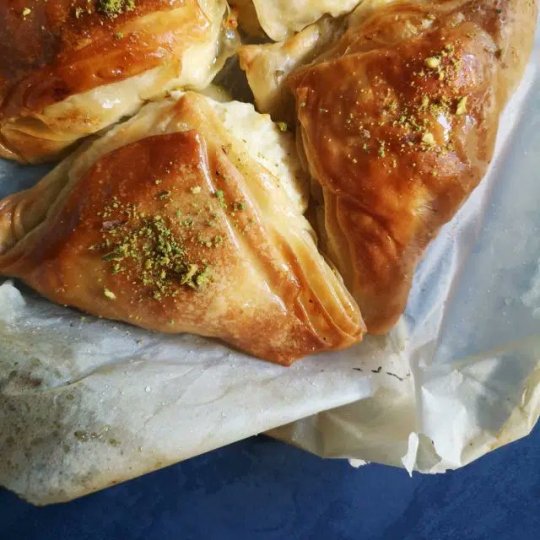
"Mtabbak or mtabba, a crispy dough stuffed with crushed walnuts. It also contains cinnamon, sugar, and syrup. Photo credits go to Bartek Kieżun on Instagram"
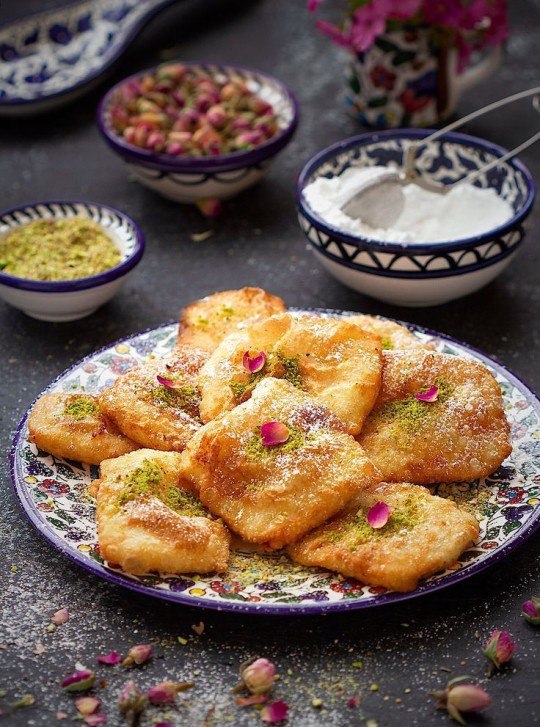
"Tamriyeh, a fried pastry filled with semolina pudding, scenter with mastic and orange blossom water, and topped off with powdered sugar"
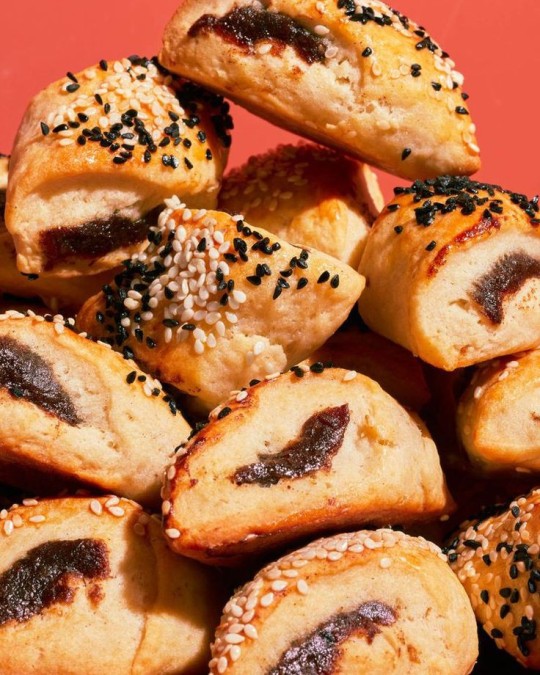
"Ka'ak bi Tamer, which are date paste filled cookies with cinnamon! A dessert made for Eid-Alfitr. It's topped with nigella seeds, and the cinnamon-spiced date paste is the most important part of it all– you can eat it on its own or have it with coffee"
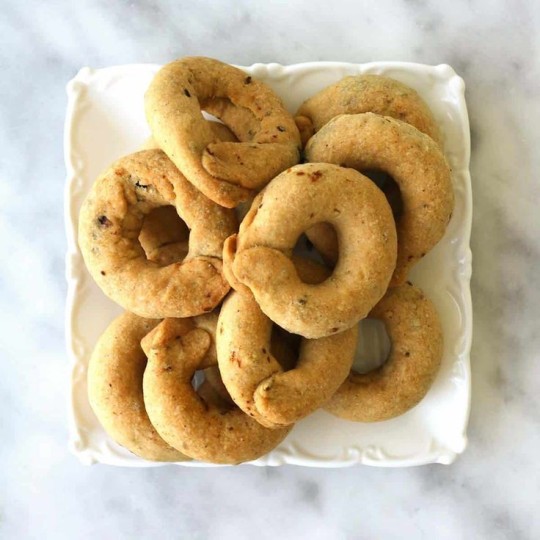
"+ Ka'ak Asawer, another dessert that can be prepared for Eid-Alfitr. It's translated to bracelet cookies, and they use date paste, flour, anise seeds, sugar, ground cinnamon, and olive oil"
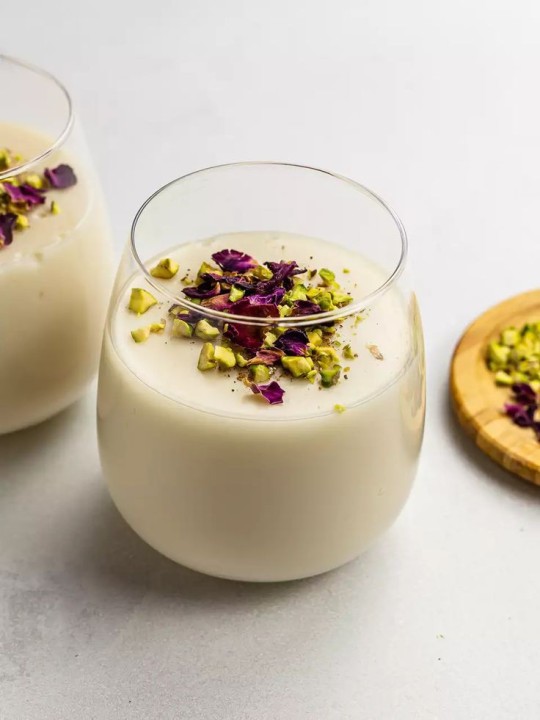
"Muhallebi or mahalabia, a milk pudding that's made with sugar, corn starch, and fragrant flavorings! It's topped off with nuts, pistachos, and almonds and sprinkled with ground cinnamon or shredded coconut"
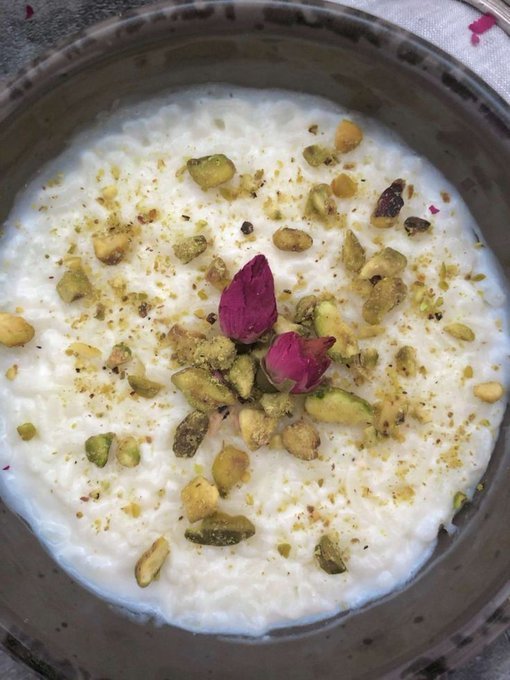
"Rice pudding, which is a common dessert in Palestine, and it's your choice to top it off with nuts or not"
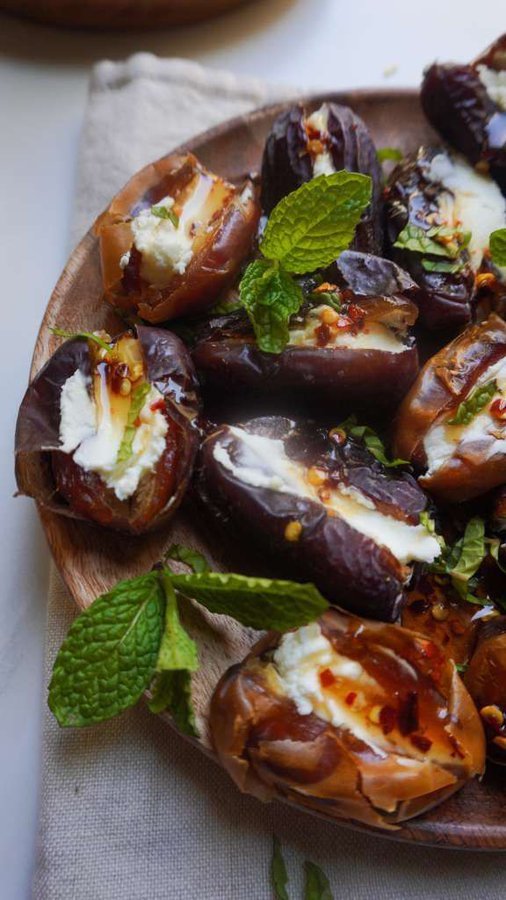
"Stuffed dates, using medjool dates and cracking them open to be stuffed with goat cheese and pistachios– but you're free to add anything else"

"Ma'amoul, a buttery crisp cookie primarily made of farina and can be stuffed with (spiced) dates, walnuts, or pistachios. This is another Christian dessert made by Palestinian mothers during the week of Easter Sunday."
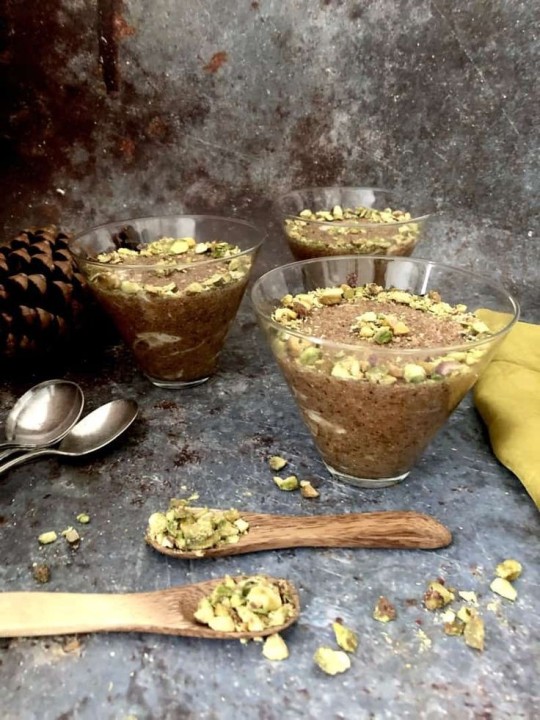
"Halawit Smid, a farina based dessert with added sugar and unsalted cheese. It's preferably served fresh"
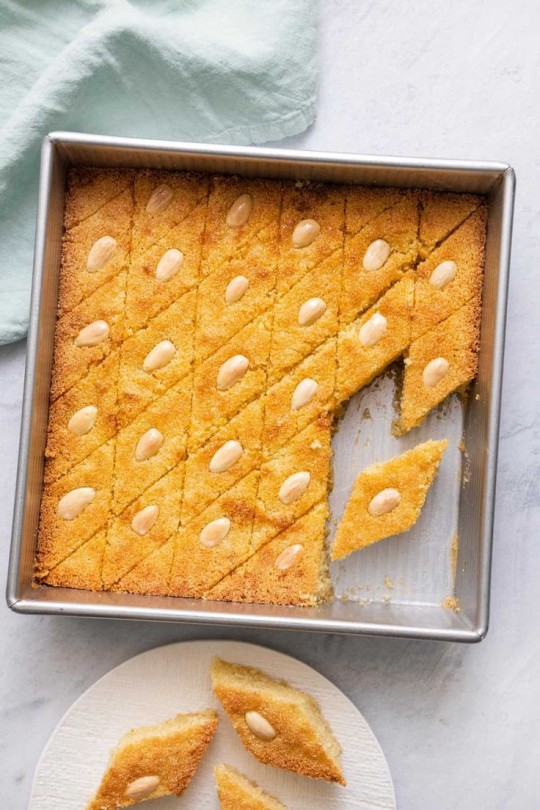
"Namoura cake, aka harissa dessert! It's made with semolina or farina flour, and then topped off with syrup once baked"
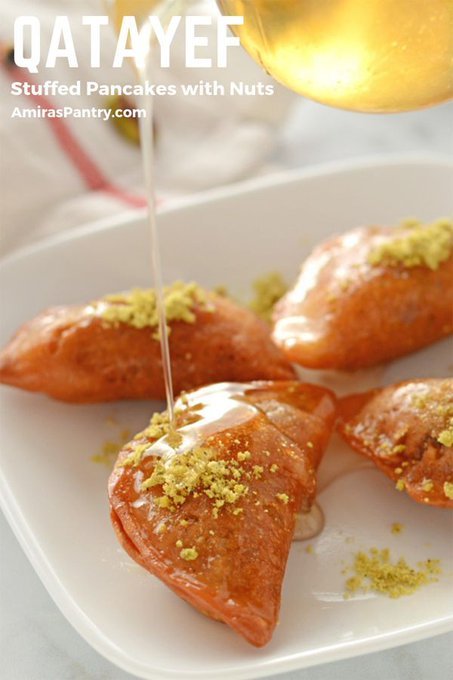
"Qatayef, which is eaten during the month of Ramadan. It's made of farina, flour, water, and yeast blended together– the process is pretty similiar to making pancakes, but only one side is cooked"
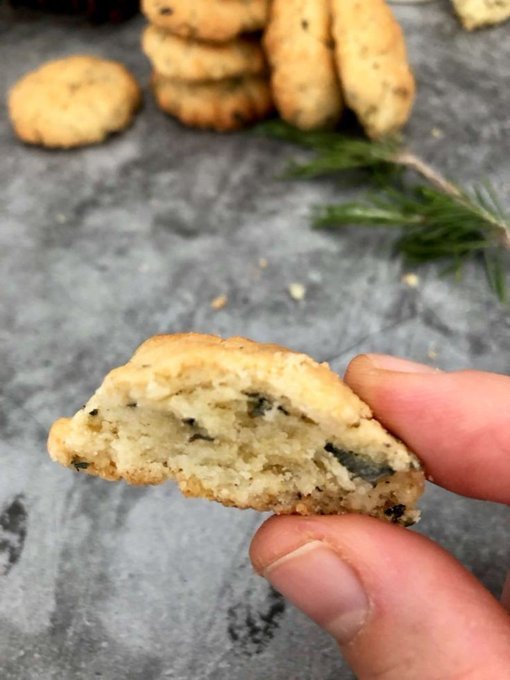
"Since I've mentioned using zaatar for a lot of things, I recently just discovered this but– there's also things such as zaatar cookies!! It's just as implied that the cookies are filled with zaatar, I'd be so willing to make this on my own"
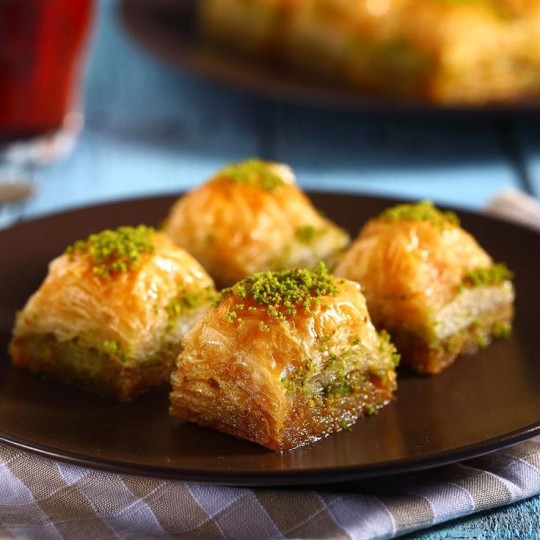
"Baklava, made from phyllo pastry dough, butter, nuts, basil, and a sweet honey syrup"
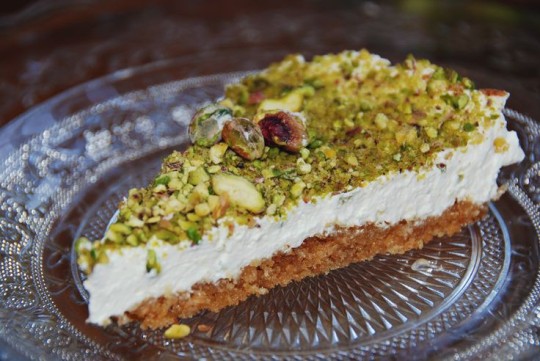
"Aish el saraya, arabic version of a bread pudding. It's basically a layered bread, where it starts from the bottom, then covered with a sweet syrup, cream, and crumbled pistachios."
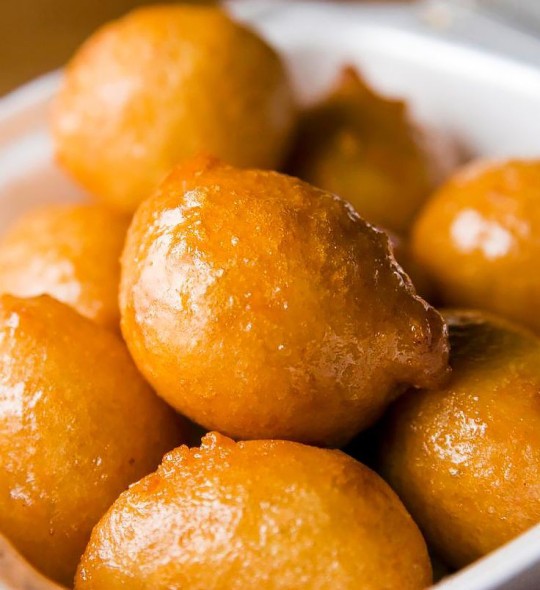
"Awwami, it's defined as "crisp donut ball" in English. It's a deep fried dough ball coated with sesame seeds, and dipped in cold syrup water."

"Halawet el Jibn, a sweet cheese dessert rolled with custard, heavy cream, drizzled rose water + syrup, and garnished with nuts."
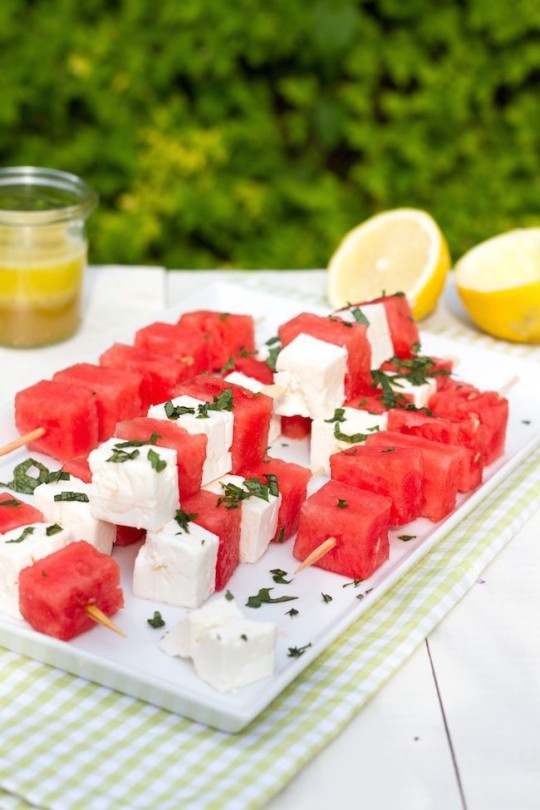
"Lastly, I'd like to add watermelon and cheese– for me, it's like,,,, bittersweet!!! You should totally try it and we also have this during Ramadan"
"Well, that's all I can think of for Palestinian desserts! Here's the first part for general foods, I know I did make a promise for part two
I hope you guys liked this thread, and if you have any opinions please feel free to quote tweet anything on here if I made a mistake, feel free to correct me, it's always appreciated P.S if you're a zionist commenting here I really don't care, just scroll, I'm sharing my culture
One LAST thing. if you want any of the recipes from here, check out this website, the creator (Wafa) shares so many wonderful traditional Palestinian dishes."
[End Quote]
7K notes
·
View notes
Photo




#halva#rose#pistachio#recipe in greek#semolina#sweets#sweet#sweet food#Greek#food#dessert#desserts#edible flowers
1 note
·
View note
Text
youtube
Banana and semolina sweet dish is a delicious and wholesome dessert that is popular in many parts of the world. This dish combines the natural sweetness of ripe bananas with the nutty flavor of semolina to create a mouth-watering dessert that is both nutritious and satisfying. The dish is often served as a dessert or a snack and is easy to prepare with just a few simple ingredients. Whether you are looking for a quick and easy dessert or a comforting snack, this banana and semolina sweet dish is sure to satisfy your cravings.
Website: https://rubyskitchenrecipes.uk/bananaandsemolina
Video: https://youtu.be/Dim2P8fdaIk
#rubyskitchenrecipes#rubyskitchen#rubykakitchen#Banana#Semolina#Dessert#Sweet dish#Healthy#Nutritious#Vegetarian#Gluten-free#Easy recipe#Quick recipe#Homemade#Tasty#Delicious#Quick Snack#Comfort food#Youtube
1 note
·
View note
Text
10-Minutes Laddoo
Nobody would believe you made these in 10 minutes. Packed in a beautiful box, these make a great gift too. Also a big hit at kids' parties (okay, adults too).
Nobody would believe you made these in 10 minutes. Packed in a beautiful box, these make a great gift too. Also a big hit at kids’ parties (okay, adults too).
Diwali is around the corner. You might be seeing an influx of decadent sweets and desserts all over the internet. What you may think is “This looks so good, but I do not have hours to make this”. For these laddoos, all you need is 10…
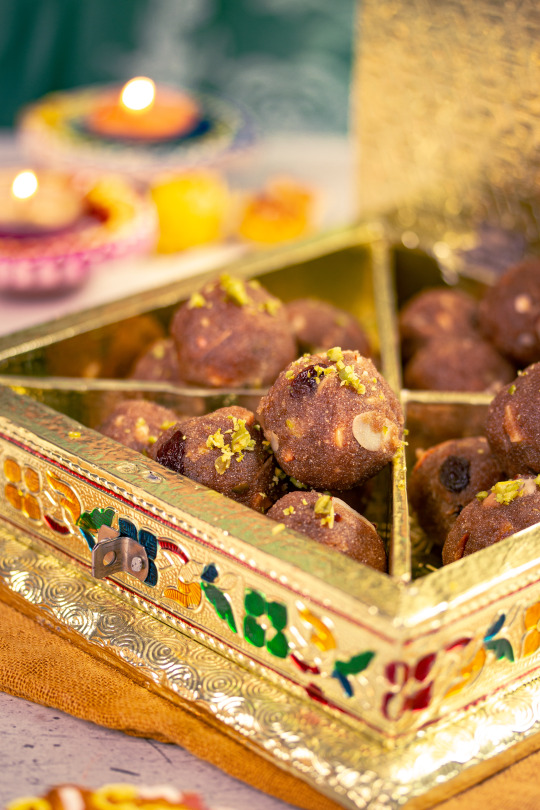
View On WordPress
#Diwali dessert#Diwali recipe#Diwali sweets#Diwali sweets ideas#Indian dessert#Indian sweets#Quick dessert#Semolina dessert#Sooji laddoo#Suji laddu
0 notes
Text
Sfogliatella - Chef Luca x Reader (The Bear)

Tagging: @Princesssunderworld @djlnkaled @kmc1989 @ineedrickgrimes @imjustheretoreads-blog

One of the things Luca loves the most about living on a boat is the sound of the waves lightly lapping against the hull as he falls asleep at night, your body curled up against his, his fingertips combing lightly through your hair.
In the mornings he leaves you sleeping in his sheets, your hair a bird’s nest from the previous night’s adventures, his lips brushing over your forehead before he starts his shift. He spends the rest of day thinking about you as he creates the most awe inspiring desserts based on the tours you take of the city during his days off.
You’ve been working as a translator for a few years now, residing in Copenhagen while attending meetings all over the world when required. You take to languages the same way he took to baking, with a ferocity that refuses to be sated.
It makes things interesting in the bedroom when Luca discovers he loves the way you speak Italian. You whisper the filthiest things against his skin as you ride him, your fingers tangled in his hair as he fucks up into you because you make him lose his god damn mind.
In the aftermath you lay draped across him, your fingertips tracing over the freckles on his chest as he asks you to tell him about the best dessert you’ve ever eaten.
“In Naples they have this thing called Sfogliatella.” You tell him, propping your chin up on his chest as you describe it. “It’s like a shell shape and the pastry is layered. It has a sweet custard-like filling made with semolina and ricotta. Sometimes they add chocolate or candied citrus fruit. It’s spectacular, I remember taking a bite of it and I swear I saw God.”
“That good huh?” He says, his fingertips tucking a stray strand of hair back behind your ear.
“I’ve never had anything like it.” You tell him, the edges of your mouth tipping up into a smile at the memory. “It’s one of the things I miss the most about living in Italy.”
He’s never been to Italy, he’d done some travelling before he landed in Copenhagen, shifted from restaurant to restaurant in pursuit of his passion but he’d never ended up there. He thinks he’d like to one day, that maybe the two of you could go together.
In the meantime he sets himself a new challenge.
Making the Sfogliatella.
The first thing he learns about the pastry is just how time consuming it is to make. It takes over twenty seven hours and that’s just the test samples, which go horribly because he’s still finding his footing.
He slaves over the recipe for months, making adjustments, consulting with Carmy and experimenting with different fillings to get the right texture and consistency.
“This is starting to feel like a proposal pastry.” Carmy remarks during their seventh Zoom call, while they’re discussing the merits of using apricots or lemons for the centre and Luca doesn’t respond.
He doesn’t know when the pursuit of the perfect Sfogliatella became more than just a challenge. He thinks it was the day you took him to the Glyptoteket, your fingers linked through his as the two of you explored the Winter Garden. He can’t explain just how stunning it had been, stepping into that oasis, being surrounded by that plush greenery. He’d sat there for hours sketching ideas in his notebook while you explored the other exhibits. He’d been lacking in inspiration at the time, he’d confided that to you the night before because he’d become frustrated with the menu he was working on and you’d brought him to this place filled with beauty and magic. It was at that moment he realised just how much you understood him, you’d known exactly what he needed even when he didn’t.
“Good luck.” Carmy signs off and Luca’s left to make a decision between apricots and lemons without him.
It’s on the eve of your birthday that he finally achieves perfection. He carefully packs the pastries away to take home for tomorrow when he’s going to make every single one of your dreams come true.
When you wake up the next morning on his boat it’s to the scent of Earl Grey tea and freshly baked pastries. You can’t believe your eyes when you sit down at the kitchen table and he sets down the Sfogliatella in front of you. He will never forget the expression on your face when you bite in into it, the look of joy, the moan of appreciation.
“It’s better than the one in Naples.” You tell him, pressing your fingertips to your lips because you’re starting to get emotional. “I can’t believe you did this for me.”
“You deserve the world.” He tells you as he gets down on one knee in front of you, taking your hand in his. “And I want to give that to you as your personal chef and your husband.”
You laugh then because you’d never imagined when you’d taken the job in Copenhagen that you’d end up falling in love with a man as wonderful as Luca, one that has spent months striving to make you feel so special on your big day.
“Yes.” You say as he slides the engagement ring on your finger. “Of course I’ll marry you Luca.”
Love Luca? Don’t miss any of his stories by joining the taglist here.
Like My Work? - Why Not Buy Me A Coffee

191 notes
·
View notes
Text
Honey cake is a hallmark of Rosh Hashanah and the fall Jewish holidays — Ashkenazi honey cake, that is. But did you know there’s a Sephardi cake traditionally served for Rosh Hashanah, Yom Kippur break fast and during Sukkot? Like its Eastern European counterpart, tishpishti symbolizes wishes for a sweet new year and the fullness of life. The cake is also popular for Purim and adapted for Passover.
Semolina pastries and puddings have been made for centuries throughout the Mediterranean, North Africa and the Middle East. Tishpishti is traditionally made with fine semolina and soaked in a sweet syrup of sugar, honey or a mixture, but beyond these common elements, there are many variations in both the way tishpishti is made — such as nuts or no nuts, eggs or no eggs, flavored with lemon, orange or rose water — and even what it’s called according to different geographic and cultural roots. For example, in Egypt, it’s basboosah or baboussa, namora or namoura in Syria and shamali in Crete.
Tishpishti is perhaps the name most used and, as we know it today, the cake originated in Turkey. In the “Encyclopedia of Jewish Food,” Gil Marks explains that in Israel and for Jews from once-Ottoman Turkey, Greece and the Balkans, the name is probably a nonsense name from the Turkish “tez” (fast/quick) and “pişti” (plane/slope). Put together, it means “quickly done.” In Ladino it might also be called pispiti, tupishti and revani, which Joyce Goldstein in “Sephardic Flavors: Jewish Cooking of the Mediterranean” notes is named after a 16th century Turkish poet “who wrote about the delights of food.”
Many tishpishti recipes use eggs, including ones that instruct you to whip the whites separate from the yolks, a Sephardi contribution to tishpishti. This recipe, however, is based on a very old traditional way of making cakes from a thick dough without eggs. My concession to modernity is adding baking powder and soda, both 19th century products, to lessen the density of the cake. Using ground almonds instead of walnuts will result in a lighter colored cake, which is traditional at Rosh Hashanah to symbolize a bright new year. Tishpishti is delicious on its own or served with a spoonful of yogurt, labneh or whipped cream and a cup of mint tea or strong Turkish coffee.
Notes:
It is best to make the syrup ahead of time so it has time to cool, although you can choose to make it while the cake bakes, then refrigerate it to cool more quickly.
Tishpishti is best when left at room temperature for several hours or overnight so the syrup penetrates the cake.
Store wrapped at room temperature for two days or a week in the refrigerator. The cake can be well-wrapped and frozen for two months. Defrost and then refresh with some drizzles of warm syrup.
194 notes
·
View notes
Text
the milestones menu: nonna berzatto's homemade pasta
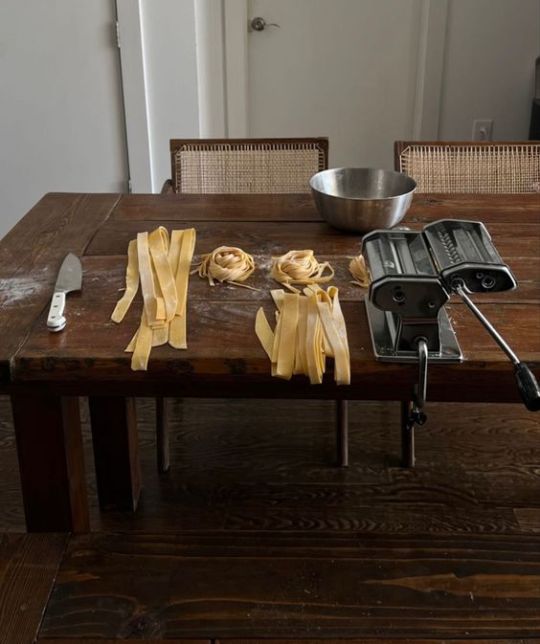


prompt: yours and carmen's first "i love you".
contains: fluff, general fluff. some mentions to dead relatives, carmen's self doubt, but very minimal bc it's very fluffy :)
2 cups of flour- Semolina.
4 Large Eggs
Pinch of Salt
Put flour into a mound. Make a center, and add the eggs to the middle. Whisk slowly with a fork, gradually working it in little at a time until nice and thick. Knead the mixture for about ten minutes. Let it rest in the fridge for thirty minutes. Put it in a ball, and roll it out very thin.
“Can’t believe you never had homemade pasta.” Carmen shook his head, blue eyes peeking out from under the mess of curls.
“Nope.” You shook your head, grinning over the crystal wine glass, sipping your riesling slowly. “Strictly a boxed pasta girl.”
“Fuckin’ criminal.” Carmen grinned, a playful, lopsided smirk that had you blushing.
The counter was covered in flour, stopping just where you rested, propped up on the granite while Carmen worked. Your eyes trained on his hands, hands that stirred the eggs into the flour, kneaded the dough until your thighs were clenching.
“My Nonna is rollin’ in her grave right now, you know that?” Carmen pulled you from your gaze, rolling out the dough.
“Noooo, don't say that.” You laughed, shaking your head. “You’re making me feel bad, Carmen. I swear I thought Olive Garden made fresh pasta.”
Carmen laughed, a little shy but louder now- more himself. He’d blossomed with you lately, unveiling new parts of himself every single day. “‘M just kiddin’, baby.” Carmen hummed, eyes cutting to you a little skeptical. “Sorry, I-I didn’t mean to sound like an asshole. That sounded douchey, right?”
You smiled, setting your glass behind you. “No, I was just messin’ with you, bear.” The nickname- his nickname. Hearing it more and more roll from your tongue, each time his heart skipped harder than the last.
“Is this her recipe?” You asked, picking up the faded recipe card, looped cursive on the aged paper. “Your Nonna’s?”
“Yeah,” Carmen nodded. “I, uh, so when I left to go to culinary school, right? She was sick, and… and I think she, like, knew that when I went to New York that would be the last time she saw me.” Carmen’s face dropped, slow and sad, it made your own heart sink.
“So she-she gave me all these recipe books and-and cards that were hers. We used to cook together a lot. She taught me how to cook, y’know? My mom and dad were always at the restaurant and didn’t want to cook when they got home. They didn’t want me in the restaurant either so I spent a lot of time with her.” Carmen muttered. You could see the memories playing behind his eyes.
You liked to picture that version of Carmen, a little boy with wild curls, helping his Nonna cook. Happy memories.
“That’s sweet.” You smiled, leaning against the cabinets. “She did a really good job. You know she’s so insanely proud of you.”
Carmen snorted, shaking his head lightly. “Yes, she is. Everyone’s proud of you, Carmen… I’m proud of you.” You hesitate, eyes scanning his features. It was true, of course, but handling Carmen sometimes was like handling a frightened animal. You were never sure what would make him scatter away in fear.
Carmen swallowed thickly, cheeks flushed red, lips in a tight line. “T-Thanks.” Carmen muttered, wiping his hands on his apron, tossing the flour back into his clammy hands.
“She, uh, she woulda loved you, y’know.” Carmen’s eyes met yours, intense and piercing. “I wish you coulda met her.”
“Yeah, me too.” You nod. “I would’ve loved to hear all the baby Carmen cooking stories. I bet she had some good ones.” You smiled, bright and wide- perfect. It made Carmen’s brain numb.
“Yeah, she would.” Carmen nodded, hands stilling, still buried in the dough.
He felt it in his bones, his heart, consuming his thoughts. The overwhelming need he’d felt for weeks, since the first time you kissed him really, that he’d been fighting- too scared to say. What he felt every time he looked at you, when he thought about you.
“Um, I-I wanna say something, and-and I don’t know if I should even fuckin’ say this or-or if it’s… fuck, if you-you feel the same or I just, I don’t wanna fuck this up because this is like the best thing that’s ever happened to me, and-and I’m workin’ on not ruinin’ good shit in my life and bein’ ok with it like-like my therapist says ya know, but-” Carmen rambled, words spilling out in fast, overwhelming bouts that took you by surprise.
Carmen flustered, reaching a dough covered hand to his face, the sticky batter catching on his brows and hair. He flushed deeply, hands shaking in embarrassment, cursing under his breath. “F-Fuck, I-I’m sorry. I-I, nevermind, it’s not… I don’t know why-why I would-” His hands trembled, body shaking with anger and embarrassment. Way to fuckin’ go, Berzatto, you fuckin’ ruin it. That’s all you ever do, Carmen thought bitterly, wiping his hands off on the cloth.
“Carm,” You said softly, your voice a beacon in the raging sea of his mind, pulling him out of his own harsh thoughts.
Carmen turned, a fury flush of pure embarrassment that burnt all down his cheeks to his chest. Eyes soft and wary, hesitant like he was doomed, destined for the worse.
You slide off the counter easily, grabbing the spare towel, bringing it to his eyebrows, wiping the dough off gently. The softness of your touch soothed Carmen, lulling his hammering heart- he didn’t see your own shaking hands, filled with your own adrenaline nerves.
You stood in front of him, eyes on the other, careful and watching- unsure. “I-I love you, too.” Your breath hitched, squeezing the words out in a nervous tumble. Carmen didn’t move, body going rigid, heart stopping entirely. The ringing was back in his ears, clouding his brain so loudly he was sure he heard you wrong.
“I’ve wanted to say it for a while, too, but didn’t…” You shook your head, heat in your own cheeks, eyes casting down to his dough covered hand. “I didn’t know if-if you felt that or if- I don’t know, I didn’t want to seem crazy or obsessive if it was too soon, and-and scare you.”
“No,” Carmen croaked, tongue thick in his own mouth. “No, I-I mean- fuck,” Carmen shook his head, looking to the wall. He needed a second, words jumbled in his mouth, heart racing, so high off the adrenaline he felt like he could combust at any moment.
“I-I was gonna say that too.” Carmen nodded, the quirk in your lips making his heart lurch. “That I love you. I was- yeah, I love you. I-I have for a while.”
“Really?” You whispered, voice tiny and excited, like it was a secret just for the two of you. Maybe it was.
“Yeah, fuck yeah.” Carmen let out a breathy, shaky laugh. “I love you, and-and I just love you so much it makes my brain hurt sometimes.”
“Me too.” You grin, a hand pressing to his cheek. “I love you.” The phrase you’d repressed for so long, deprived yourself of saying now spilled out of you like a mantra- like that was all you could say now.
Carmen grinned, brain bubbly and light. He let you pull him into a kiss, head tilting down, lips molding over yours so they fit perfectly.
Later over plates of Bologonese, you grinned across the table from Carmen. “If I didn’t tell you I loved you before, I definitely would now.” You moaned, pointing at the plate. “I really was missing out.”
Carmen beamed under your praise, gooey and love drunk off your words- off you. He knew Viola Berzatto, wherever she was, was boasting with pride.
And he knew his Nonna would have loved you too.
#thebearer#carmen berzatto#thebearerblurbs#carmen berzatto x reader#carmy berzatto x reader#the bear#carmy berzatto#carmen berzatto fluff#carmen 'carmy' berzatto#carmy berzatto fluff#the milestones menu#carmen berzatto x fem!reader#carmen berzatto x female!reader#carmen berzatto x you#carmen berzatto fic#carmen berzatto blurb#the bear fx#the bear hulu#the bear fic#the bear fanfiction#carmen berzatto fanfiction#carmy the bear
767 notes
·
View notes
Text
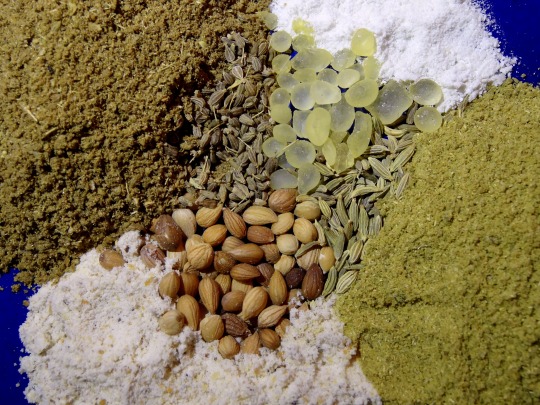
[ID: Mahlab seeds, aniseed, fennel seeds, and mastic in the center of a plate, surrounded by piles of the same spices in powdered form. End ID]
دقة كعك فلسطينية / Dugga ka'k falastinia (Palestinian spice blend for cakes)
دُقَّة كَعْك ("dugga ka'k"; "cake powder")—also known as "بَهَار الكَعْك" ("bahār al-ka'k"; "cake spice") or "بَهَارَات الكَعْك" ("bahārāt al-ka'k"; "cake spices")—is a blend of spices used in Palestinian cakes and sweet pastries. Even when a recipe doesn't call for the blend explicitly, you'll often spot its components in the ingredients list: aniseed, fennel, mahlab, and mastic.
"دُقَّة" is a noun meaning "fine powder." It comes from the verb "دَقَّ" ("daqqa": Levantine pronunciation, "dagga" or "da'a"), meaning "to crush," "to grind," or "to powder." The verb is of the root pattern "د ق ق" (d q q), which produces words related to accuracy and precision (and thus, to small measures of things): compare "دِقّة" ("diqqa") "accuracy"; "دَقِيقَة" ("daqīqa") "minute" (the measure of time); and "دَقِيق" ("daqīq"), which means both "accurate" and "flour, meal."
"كَعْك" refers to pastries including cookies, tarts, buns, and cakes; it is related to the Aramaic "כַּעְכָּא" ("ka'kā") "cake."
This spice blend is used for pastries including مَعْمُول ("ma'mūl")—date-filled semolina cookies—and فَتُوت ("fatūt"), a soft, sweet flatbread from Nablus. The sweet, liquorice-like fennel and aniseed, the mahlab's notes of fruit and almond, and the mastic's smell of cedar and citrus combine to make a delicately aromatic blend that gives an incredible depth of scent and flavor when small amounts are added in with flour.
Recipe under the cut!
Ingredients:
2 Tbsp (11g) aniseed (يانسون)
2 Tbsp fennel seeds (شمره / شومر)
2 tsp (7g) mahlab seeds (محلب) (or 2 tsp mahlab powder, packed)
1/4 tsp (.8g) mastic granules (مستكة)
Pinch of granulated sugar
Pinch of grated nutmeg (optional)
Aniseed, fennel, and mahlab are essential to this blend. Mastic is usually included. Small amounts of nutmeg and cinnamon are also possible additions. Some people also include a very small amount of a commercial "ريحة الكعك" ("riha al-ka'k" "cake scent”)—also known as "كلفة كعك" ("kulfa al-ka'k")—which might contain sweet spices such as cinnamon, cloves, cardamom, and allspice, as well as camphor (كَافُور), Arab yeast (خميرة العرب), bay laurel leaves, and rose hips (ذر الورد), depending on where it is sourced.
The word "يانسون" ("yansoun") can be used to refer to aniseed or to star anise (or to a beverage brewed with aniseed); in this context, it invariably refers to aniseed. Aniseed is an oval-shaped seed—smelling of liquorice, and looking a bit like cumin, fennel, or caraway, but much smaller—with a body that tapers in towards the stem end. It can be found at a halal grocery store.
Mahlab seeds may be found at a halal grocery store, though you are more likely to find it in pre-ground form. The whole seeds may also be purchased online. Mahlab should be purchased in small quantities and kept in the refrigerator or even the freezer, as it will go rancid after several months at room temperature.
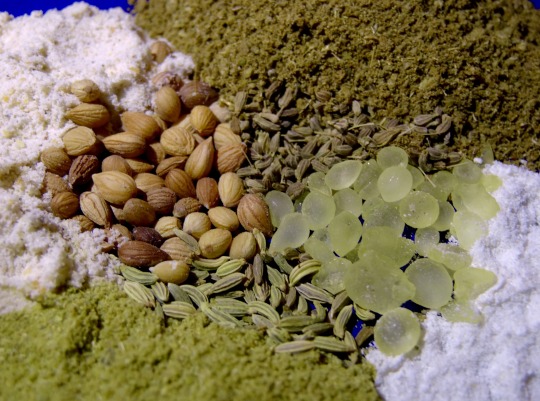
Mahlab seeds (left); aniseed (top); fennel seeds (bottom)
Mastic gum is the resin produced by the mastic tree. It is also known as mastika (مستكة), mastiha, muskeh, and masticha (Μαστίχα / μαστίχα). It may be labelled "arabic gum," but should not be confused with gum arabic, which is the sap of the acacia tree. Mastic is in the form of pale yellow droplets, not overly angular, usually the size of peas or smaller; gum arabic is a darker amber to reddish color, and has sheer angles. Mastic should smell of pine when ground. Ask at your local halal grocery store, as it may be behind the counter.

Mastic (bottom); not to be confused with tragacanth gum / goond katira (top left); or gum arabic / acacia gum / char goond (top right)
Instructions:
1. Toast fennel seeds in a dry skillet on medium heat, agitating often, until fragrant and a shade darker. Set aside on a plate to cool. Repeat with aniseed and mahlab seeds.
2. Remove skillet from heat and toast any pre-ground spices, agitating constantly, for about 30 seconds.
3. Grind mastic with a pinch of sugar in a mortar and pestle. Grind aniseed, fennel, and mahlab in a mortar and pestle or using a spice mill. Add nutmeg and mix.
You may be able to grind everything together in a spice mill if you're making a larger batch. Don't put mastic in a spice mill alone, as it can stick to the blades.
4. Store in an airtight container in a cool, dark place.
61 notes
·
View notes
Note
hey, how do you make the semolina porridge (Mannapuuro? idk if this is the correct amount of each letter) bc I know the german version is almost exclusively sweet because you just make it with milk amd semolina. There can be butter on top for flavour but together with sugar and cinnamon and/or fruit, I really like it and would love to try other versions.
It sounds that the German version is similar, but we add salt in it and eat it either with a piece of butter or typically with a berry soup of some sort. Berry soups are easy to make, too, so I'll add a recipe here for a Finnish Berry Soup (Kiisseli).

Mannapuuro
1 liter of fatty milk
1,5 deciliter semolina
spoonful or so butter to prevent the milk from burning
Salt for taste
Bring the milk to boil and mix butter in it.
Add semolina slowly little by little while whisking strongly. Semolina gets easily clumpy.
Boil for 8-10 minutes while mixing often because the milk burns easily
Add salt for taste
TIP: If you leave the porridge to set, it will thicken as it cools down.

Kiisseli Berry Soup for Mannapuuro from strawberries (but any berries will do)
You can use fresh or frozen berries. This recipe is for 4 small portions. ANY berries (or fruits!) will do, and you can even mix them together. Try to make this from oranges ;3c
500 grams strawberries
1,5 deciliter water
5 tablespoons sugar
3 tablespoons corn starch (or any other starch)
2 tablespoons cold water
Bring water to boil and add strawberries.
For fresh strawberries (remove the green stem!) boil for 2-3 minutes. For frozen, boil until they’ve melted, and after that for those 2-3 extra minutes.
Add sugar and mix.
Mix corn starch with the 2 tablespoons of cold water. Mix well.
Add cornstarch water into the berry soup while mixing the soup. Mix well.
Boil the soup for 1 minute and taste if it needs more sugar or not.
If you don't like clumpy berries in your soup, you can mix it smooth with a hand blander or in a blender. Or just drain the soup and throw the berries away. IF you need to throw berries or fruit leftovers away from your kiisseli, drain it first and THEN add cornstarch! Potato starch works, too.
If you want to have berry soup with the semolina porridge, let the soup cool down. Warm porridge + cold berry soup = NOM!
---
You can eat both the semolina porridge and the berry soup warm or cold, and also separate. Warm berry soup is fantastic! Especially warm blueberry soup with rye bread! If you want a blueberry soup, just add blueberries instead of strawberries. The amount of berries (or fruits!) is always the same 500 grams.
If you don't want kiisseli berry soup, you can eat semolina porridge with a piece of butter when the porridge is warm. Or with fresh berries!
116 notes
·
View notes
Text
Neapolitan Street Food: 6 Snacks You Should Try

Back in the days, having a meal “on the go” in Naples had little to do with hurry, but rather with poverty. Eating street food was cheap and, at the beginning of the 20th century, you could actually buy a portion of pizza for just one soldo.
Nowadays, even though the love for a table laden with food and conviviality is undeniable, street food is a common habit very ingrained in the local culture.
Here following, you will find a list of some of the street food you should try while in Naples. The amount of this kind of food is quite consistent, but here I’m listing only some of the most common specialties, easier to access for tourists.
Pizza a portafoglio

Pizza a portafoglio ( literally "pizza wallet-style") is a lighter version of the most popular pizza: it is smaller, it has less topping, and it is easier to carry around, since it is basically a “folded small pizza”. The classic version, with few ingredients, usually costs around 1,5/2 €.
Pizza fritta

Pizza fritta (“fried pizza”) was invented after WWII in order to face the crisis, given that even the classic pizza, a traditionally cheap food, had become a luxury, due to the difficulty to find and pay for ingredients like tomato and mozzarella.
The dough, during the frying process, inflates and the empty space is filled with ricotta cheese, salami and mozzarella. At the time, preparation and selling happened on the streets: the dough, previously prepared by the pizzaiolo, was fried and sold by his wife in a stall located along the alley.
Cuoppo
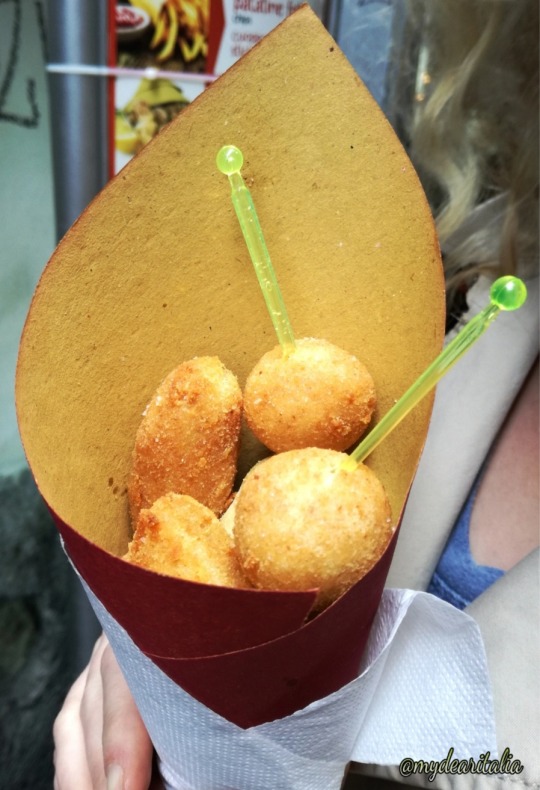
The Neapolitan cuoppo is a cone of vax paper filled with fried goodies. The traditional cuoppo (“cuoppo fritto” or “cuoppo di terra”) is usually composed by zeppoline salate, panzarotti (called also crocchè) made with potatoes, cheese and ham, Neapolitan arancini, mozzarella in carrozza and scagliuozz (small triangles of fried polenta). A more recent invention is the “cuoppo di mare”, made with fried fish and fried vegetables.
Tarallo sugna e pepe

This is quite an old recipe, which is the result of the resourcefulness of 1700’s bakers who were located in the fondaci, a very poor area near the port. Instead of throwing away the leftovers of the dough used to make the bread, they opted for re-using them, giving them a ring shape and adding pepper and lard. At the beginning of 1800, almonds were also added to the recipe, giving birth to the a snack, which was sold by peddlers and that represented a nourishing yet cheap food for the poor Neapolitan workers.
Nowadays you can find taralli in the osterie (inns), served with wine, beer or even sea water, and they are sold in the tarallerie (specialized shops) and bakeries.
Frittatina di pasta
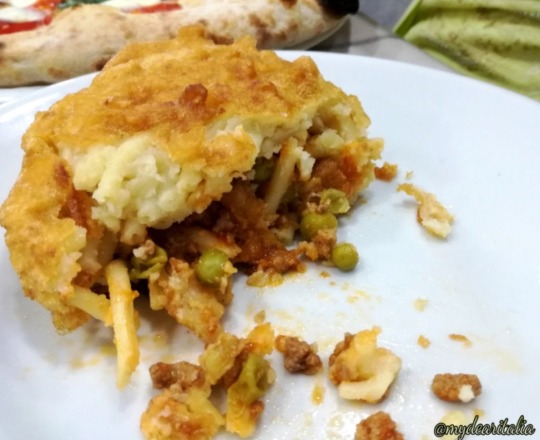
Frittatine di pasta are often consumed in pizzerias as an appetizer before pizza, or as street food. A frittatina is a disc of dough of 10 cm, filled with bucatini pasta, white sauce, peas, ham and provola cheese, covered with batter and fried. Some varieties also contain ragù (see pic).
Sfogliatella

One of the most common street desserts is the famous sfogliatella, invented in the 18th century, by the nuns of the ancient St.Rosa Cloister located in the Amalfi coast. For this reason, the sweet was called “Sfogliatella Santarosa”.
At the beginning of the following century, one of the nuns passed the recipe to her nephew P. Pintauro, who had a patisserie in via Toledo in Naples and the rest is history: he modified the recipe and invented the typical Neapolitan sfogliatella. There are two versions of it, the sfogliatella frolla and the sfogliatella riccia (see pic). The filling is equal for both: it is made with semolina, ricotta cheese, eggs, sugar, candied fruits, orange blossom’s water, vanilla and cinnamon and it is very aromatic.
In Naples you usually find these two typologies, whereas in the rest of the region Campania, you can still find the original Santarosa and its spinoff version called coda d’aragosta (“lobster’s tail”), with a filling made of cream and chocolate or with chantilly cream.
If you want to read the complete version of this article, check my blog. Enjoy your next trip to Naples! 😜
Sara-Unearth Italy. Find me on WordPress, Instagram, X.
#italian food#naples#italian culture#foodporn#italian foodporn#napoli#italy#italian#travel italy#street food
23 notes
·
View notes
Text
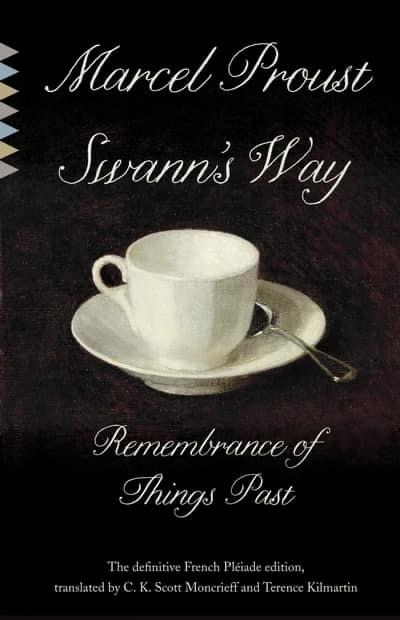


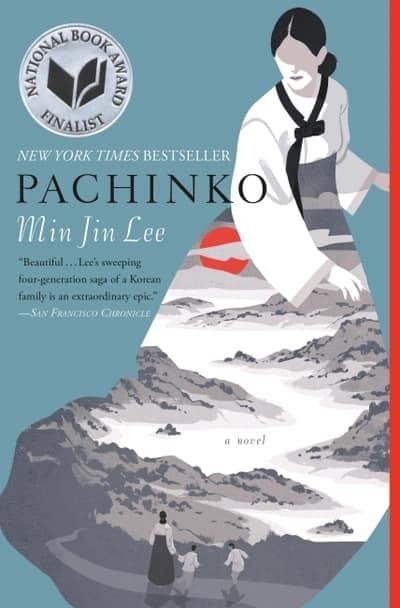


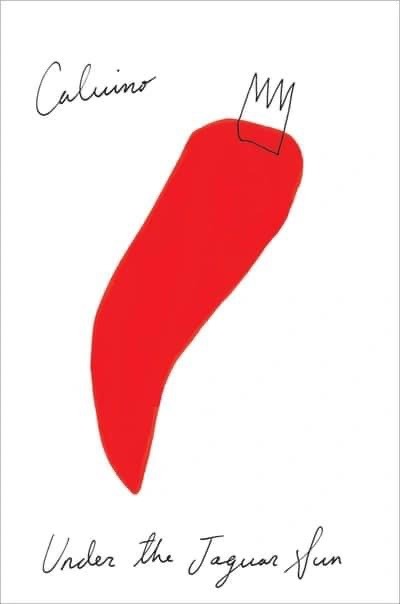
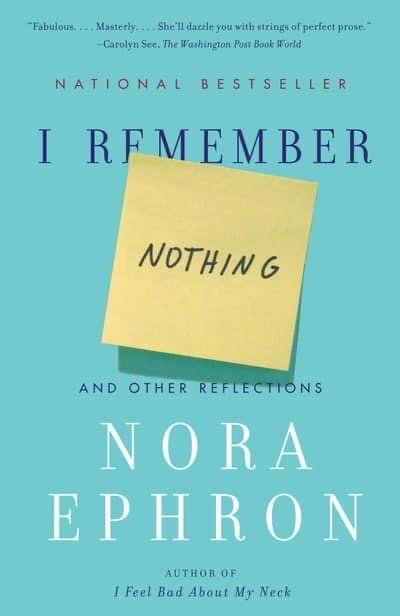


THE 12 MOST UNFORGETTABLE DESCRIPTIONS OF FOOD IN LITERATURE
Haruki Murakami’s stir fry, Maurice Sendak’s chicken soup with rice—only the most gifted writers have made meals on the page worth remembering.
By Adrienne LaFrance for The Atlantic
In literature, references to eating tend to be either symbolic or utilitarian. Food can indicate status or milieu (think about all those references to Dorsia in American Psycho), or it can move the plot forward (Rabbit Angstrom’s peanut-brittle habit in John Updike’s final Rabbit book). Even in the hands of the greats, food scenes can seem less than central to a story, more filler or filigree than substance. There are exceptions, however—moments in which food unlocks a higher story form. Here are 12 of my favorites.
>>>>>
In addition to having one of the best opening lines of any novel ever, “The Wind-Up Bird Chronicle”contains some of the most memorable meals in all of literature. In a novel that is all surreality, darkness, and rabbit holes, Murakami’s simple descriptions of sustenance have an almost metronomic quality—the only thing anchoring the story to reality as it slips away from its main character, Toru—while setting the tempo for a strange, unfolding mystery:
“At noon I had lunch and went to the supermarket. There I bought food for dinner and, from a sale table, bought detergent, tissues, and toilet paper. At home again, I made preparations for dinner and lay down on the sofa with a book, waiting for Kumiko to come home … Not that I had any great feast in mind: I would be stir frying thin slices of beef, onions, green peppers, and bean sprouts with a little salt, pepper, soy sauce, and a splash of beer—a recipe from my single days. The rice was done, the miso soup was warm, and the vegetables were all sliced and arranged in separate piles in a large dish, ready for the wok.”
Such scenes show up repeatedly in Murakami’s work. Every time, the effect is somehow both mouthwatering and unnerving. Note the simplicity of the menu, the methodical preparation, the sense of time and of waiting. Murakami’s descriptions of food do exactly what his novels do best—they take the mundane and make it somehow magical, take the real and warp it into a dream.
+
“Under the Jaguar Sun,” by Italo Calvino
Calvino’s particular skill is his dreamer’s eye, his ability to make stories of incredible lightness out of a too-complicated world. In “Under the Jaguar Sun,” a collection of three short stories that engage the senses, he describes the act of cooking as “the handing down of an intricate, precise lore.” Each dish can be a kind of story that reflects the person who eats it—one that attaches a meal to the ancestral. (Anyone who has tried to interpret her Italian grandmother’s handwritten recipes will see the humor and the profundity in this kind of bequeathed knowledge.) Calvino writes, too, of food’s unique ability to capture a moment in time. In one scene, he describes a couple sharing a meal in an orange grove in Tepotzotlán, Mexico:
“We had eaten a tamal de elote—a fine semolina of sweet corn, that is, with ground pork and very hot pepper, all steamed in a bit of corn-husk—and then chiles en nogada, which were reddish brown, somewhat wrinkled little peppers, swimming in a walnut sauce whose harshness and bitter aftertaste were downed in a creamy, sweetish surrender.”
With mesmerizing style, Calvino captures the way a perfectly prepared dish can, for an instant, become the very center of the universe, the way a meal between two people can hang suspended in an everlasting present.
+
“I Remember Nothing: And Other Reflections,” by Nora Ephron
One of the most durable things about Ephron, a decade after her death, is how easily brilliance seemed to come to her. That same sense of ease is apparent in her appetizing description of a ricotta pancake, from the collection “I Remember Nothing.”The recipe materializes unexpectedly at the end of a charming essay about the cultural meaning of Teflon, and it conveys just enough whimsy to inspire the reader to give it a go:
“I loved the no-carb ricotta pancake I invented last year, which can be cooked only on Teflon … Beat one egg, add one-third cup fresh whole-milk ricotta, and whisk together. Heat up a Teflon pan until carcinogenic gas is released into the air. Spoon tablespoons of batter into the frying pan and cook about two minutes on one side, until brown. Carefully flip. Cook for another minute to brown the other side. Eat with jam, if you don’t care about carbs, or just eat unadorned. Serves one.”
A few easy ingredients! A casual flip! Serves one! Ephron delightfully blends creativity and sophistication. Only real grown-ups are out there inventing new kinds of pancakes from things like ricotta, obviously. The truth is (I’m sorry, Nora) that this pancake is not actually very tasty, at least not when I tried making it. But she loved it, and that’s all that matters.
+
“Chicken Soup With Rice: A Book of Months,” by Maurice Sendak
Please tell me that you know of Sendak’s Nutshell Library, a tiny four-volume set, each roughly the size of a deck of cards, first published in 1962 and made in every way for the eager hands of early childhood. When I was very small, I treated my beloved copy—which remains in arm’s reach on my desk now—with something like religious fascination. Each book is a banquet of mischief and reverie. Picking Pierre as a favorite meal in literature—as you may recall, Pierre, the boy who doesn’t care, is eaten by a lion—would probably be more Sendakian, but to me, nothing can surpass “Chicken Soup With Rice.” This book of simple nursery rhymes takes readers through the months of the year, each one attached to a verse about the pleasures of eating chicken soup with rice in locales across the globe (“far-off Spain,” “old Bombay”) and ever more extreme conditions (the bottom of the ocean, a literal robin’s nest). The singsong, paired with darling illustrations and Sendak’s devil-may-care attitude winking from every page, is forever-enchanting stuff. I couldn’t possibly pick just one, but here’s September:
In September
for a while
I will ride
a crocodile
down the
chicken soupy Nile.
Paddle once
paddle twice
paddle chicken soup
with rice.
+
“Swann’s Way,” by Marcel Proust
You were expecting this one, I know. The madeleine in “Swann’s Way” is so indelible, that, I will confess, I avoid eating them entirely, because a real madeleine would only ruin my memory of the memory described by Proust. On a winter day, the narrator comes home to his mother, who offers him tea and one of the “short, plump little cakes” called “petites madeleines”:
“Mechanically, weary after a dull day with the prospect of a depressing morrow, I raised to my lips a spoonful of the tea in which I had soaked a morsel of the cake. No sooner had the warm liquid, and the crumbs with it, touched my palate than a shudder ran through my whole body, and I stopped, intent upon the extraordinary changes that were taking place. An exquisite pleasure had invaded my senses, but individual, detached, with no suggestion of its origin. And at once the vicissitudes of life had become indifferent to me, its disasters innocuous, its brevity illusory … I had ceased now to feel mediocre, accidental, mortal. Whence could it have come to me, this all-powerful joy?
Years after first reading “In Search of Lost Time,” I’m sometimes transported involuntarily to this moment—the minutes slow, my senses heighten, and I feel overwhelmed with gratitude that if you look at it just right, all of life’s pleasures can be found swirling in a cup of tea.
+
“Revenge of the Lawn,” by Richard Brautigan
“Revenge of the Lawn” contains, quite possibly, the most fully realized post-breakup scene of any collection of words I have ever read. A pot of instant coffee comes to serve both as a pretense for an invitation into a former lover’s apartment and a deathblow—the simultaneous familiarity and discomfort of being around a person you once knew so well. In the scene, Brautigan describes the stretchy quality of time after he persuades his ex to have coffee with him:
“I knew that it would take a year before the water started to boil. It was now October and there was too much water in the pan … I threw half the water into the sink. The water would boil faster now. It would take only six months. The house was quiet. I looked out at the back porch. There were sacks of garbage there. I stared at the garbage and tried to figure out what she had been eating lately by studying the containers and peelings and stuff. I couldn’t tell a thing. It was now March. The water started to boil. I was pleased by this.”
Or, as Brautigan put it elsewhere in the story: “Sometimes life is merely a matter of coffee and whatever intimacy a cup of coffee affords.”
+
“Goodbye, Columbus,” by Philip Roth
Food, like sex, is everywhere in Roth’s work—sometimes inextricably. But let’s put aside the liver in “Portnoy’s Complaint,” the BLT in “American Pastoral,”all that Tiptree strawberry jam. Roth’s descriptions of food aren’t just prurient. They’re also wildly vivid, often preoccupied with class and abundance, and vehicles for the expression of his characters’ desires and resentments. In the novella “Goodbye, Columbus,” the protagonist opens the door of an old-fashioned refrigerator—actually, the second fridge in the home of his affluent summer fling—and discovers that it is overfilled with dripping, fresh, fragrant, expensive fruit:
“Shelves swelled with it, every color, every texture, and hidden within, every kind of pit. There were greengage plums, black plums, red plums, apricots, nectarines, peaches, long horns of grapes, black, yellow, red, and cherries, cherries flowing out of boxes and staining everything scarlet … I grabbed a handful of cherries and then a nectarine, and I bit right down to its pit.”
The bite, after the luxuriant description, is defiant, almost sacrilegious—perhaps his way of crossing an invisible line.
+
“Harriet the Spy,” by Louise Fitzhugh
No hero in literature is quite like Harriet M. Welsch—daring, terrible, perfect Harriet—who, by the way, took a tomato sandwich to school every day for five years. Fitzhugh’s descriptions of the sandwiches are not themselves memorable. (Each one is the same, after all.) But that simple sameness—not just the meal itself but also Harriet’s total commitment to it—makes these tomato sandwiches unforgettable. Harriet, while spying one day, encounters Little Joe Curry, the delivery boy for an Upper East Side bodega:
“Harriet peeked in. He was sitting there now, when he should have been working, eating a pound of cheese. Next to him, waiting to be consumed, sat two cucumbers, three tomatoes, a loaf of bread, a custard pie, three quarts of milk, a meatball sandwich about two feet long, two jars—one of pickles, one of mayonnaise—four apples, and a large salami. Harriet’s eyes widened and she wrote: ‘When I look at him I could eat a thousand tomato sandwiches.’” Or, as she puts it elsewhere, charmingly and succinctly: “There is nothing like a good tomato sandwich now and then.”
+
“Sentimental Education,” by Gustave Flaubert
Flaubert set out, he once said, to tell the moral history of the men of his generation. Across his work, food plays a prominent role in how some of his characters are condemned. The decadence of 1840s Paris is bewildering to Frédéric Moreau, the central character of “Sentimental Education.”
At one dinner party—held in a giant room “hung with red damask, [and] lit by a chandelier and candelabra”—overindulgent guests are served champagne-drenched sturgeon’s head, roast quail, a vol-au-vent béchamel, red-legged partridges, and potatoes mixed with truffles. In another memorable party scene, several bottles of champagne are opened at once, and “long jets of wine spurted through the air … each opened a bottle and were splashing the company’s faces” while tiny birds flapped in through the open door of an aviary—some of them settling in women’s hair “like great flowers.”
It’s no mistake that in the scenes where Moreau escapes Parisian society, such moments of culinary opulence and excess are conspicuously absent.
+
“After the Plague,” by T. C. Boyle
In the title story of Boyle’s story collection, the pandemic that rips across the planet is different from our own. Most of the world’s population is killed quickly and gruesomely, and the main character, Francis, is among a small number of the living who roam the overgrown wilds of Santa Barbara. At one point, Francis meets a woman, a fellow survivor, and they begin dating, helping themselves to the spoils of a civilization now abandoned:
I picked her up two nights later in a Rolls Silver Cloud and took her to my favorite French restaurant. The place was untouched and pristine, with a sweeping view of the sea, and I lit some candles and poured us each a glass of twenty-year-old Bordeaux, after which we feasted on canned crab, truffles, cashews and marinated artichoke hearts.
Boyle describes the magnetism of new romance with dystopian, aching imagination and humor—reminding us that humanity’s core impulse is toward survival and connection, no matter what hell our species endures.
+
Pachinko,by Min Jin Lee
In Pachinko, Lee’s gorgeous and epic tale of a family’s life in 20th-century Korea and Japan, food is a marker of passing time, of scarcity, of necessity, and of nature. Consider the soft blanket of mushrooms in the forest where Sunja steals away with the first man she falls in love with. Or the care and worry attached to her unlikely wedding: the thoughtfully procured rice, the strips of seaweed folded like fabric, the udon noodles steaming beneath the gaze of two soon-to-be newlyweds, a couple who barely know each other. Lee’s gorgeous descriptions of food demand the reader’s attention—and show us the labor required to transform nature into nourishment. The reader encounters savory pancakes made from bean flour and water, a pail of crabs or mackerel, homemade pumpkin taffy, stewed codfish, a soup kettle “half-filled with water, cut-up potatoes, and onions, waiting to be put on the fire.” No other novel I’ve read recently so effortlessly makes meals appear both meager and luxurious. Much of Pachinko’s power comes from its generational sweep, a story that shows just how long a life can be, and how resilience and sustenance can help us make it through.
+
The Sun Also Rises, by Ernest Hemingway
Anyone who has ever tugged on a pair of waders and stood thigh-deep in a cool river on a hot day, casting about for brook trout, then reeling one in, can tell you about the particular satisfaction that comes from catching, cooking, and eventually eating your own dinner. I think this is one of the reasons I can never stop rereading The Sun Also Rises, a book that poses several questions of life-shaping importance, not least of which is: Why aren’t I in Spain right now, trout fishing in the Irati river?
The Sun Also Rises has a quality I’ll never fully understand: It takes place a century ago and somehow feels fresh, still. I’ve found that you can read it at any stage of life and relate to Jake, the American narrator whose travels are fueled by his yearning for an unavailable woman. Another unforgettable scene sees Jake and a friend on a train from Paris to Pamplona, propelled by wanderlust and longing:
“We ate the sandwiches and drank the Chablis and watched the country out of the window. The grain was just beginning to ripen and the fields were full of poppies. The pastureland was green, and there were fine trees, and sometimes big rivers and chateaux off in the trees.”
Riding along with them, we see mortality and rapture commingling, vitally, just the way they do in real life.
(Follies of God)
#reading and writing#the atlantic#food#description#literature#Min Jin Lee#T.C.Boyle#Hemmingway#Louise Fitzhugh#Gustav Flaubert#philip roth#Richard Brautigan#Sendak#haruki murakami#Proust#Calvino#Nora Ephron
5 notes
·
View notes
Note
hi dira (◕ᴗ◕✿)
can i request multiple sweets? if not just answer whatever you're comfortable with ^^
strawberry shortcake, tiramisu, crème caramel, peach parfait, taiyaki
have a great morning when you wake up 🩷
strawberry shortcake - I already answered as vaguely as possible (I don't celebrate my birthday or do anything with star signs) but I'll give you a hint because you're my friend... it's very close to Valentine's Day, like, one day apart.
-
tiramisu: my favorite warm drink is tea (currently bitter tea) but I'll give you a recipe from my childhood: when I'm sick it takes me back to my father's native country.... you make strong black tea, put so much lemon juice in that it turns a caramel kind of brown and then drop loads of sugar in (honey if you want to be healthy). It should taste very sweet and sour at the same time. When we got to visit my father's home country, I loved to drink that and it always takes me back there.
my favorite cold drink is water or juice... if I'd have to pick a soda, I'd pick Malt Beer... it's just loads of Malt and it tastes sweet and almost like coca cola (at least for me, who's not allowed to drink coca cola)
-
creme caramel: my favorite breakfast is my brazilian egg sandwhich that I already described but since I love breakfast, there's so much more to eat... Scrambled eggs, fried eggs with bacon, soft boiled egg (yeah, I miss eating egg) - oh, and "Riebel" - this will immediately give away where I live to any german speaking follower, but we have a very traditional breakfast food here, that's basically Wheat or Corn Semolina cooked in Milk or a mix of Cream and Water and then, after it thickened, you put it in a pan and burn it down until it's a little gritty. We eat it with Milk and Sugar, or applesauce or Coffee. I love that and learning how to make it is very important where I grew up - if you don't know how to make it properly, you're not supposed to get married.
-
peach parfait:
A song album that I associate with a time period in my life?
Okay, don't judge me for this, but I'll pick Midnight Memories from One Direction.
When I was about fourteen or fifteen, I had to move in with foster parents. They were so much less strict and abusive than the people I had to live with before (they're not perfect, but we still manage) and the sudden freedom allowed me to get into fandoms and stuff. I discovered One Direction in that time and even though I only bought the album years later, their music is still connected with growing up in a safer place, being able to create fanfiction, stuff like that
-
taiyaki:
Okay, I'll pick a different Anime for you... and I'll pick...
Komori from The Ice Guy and his Cool Female Colleague. She's so bubbly like me, and a bit messy too. Also her ears are the cutest thing in the world. And I too don't get it when people *cough* Saejima *cough* flirt with me
-
Hope you're already having a wonderful day bby, Honeypoo! Thank you for asking!
I'd make all those sweets for you too but me cooking/making food is always a gamble. You either get something tasty, or food poisoning (funnily enough, I just did that last thing to myself yesterday... ugh)
6 notes
·
View notes
Text
James + Cooking
While he has many talents that match up with his career, James' secret (ie: the only talent he has to be at home in order to show it off) talent is cooking & baking -- and, boy, is he good at it.
Out of him and Frank, James is the cook in the house. That was determined quite quickly after Frank was presented with James' specialty one Sunday lunchtime (after many, many moons of getting sick of going to the local pub's carvery for Sunday Dinner), and it stuck right up until the day of Frank's death.
With his father being an army man, and therefore away for a good portion of his childhood, the only interaction James really had with adults was either at school or with his mother. As well as being a renowned cook, his mother was also very clear with all of her children that they must learn the basics of being a single human being from a young age.
James, of course, was absolutely no exception to the rule but he was the only one of his brothers to have actually enjoyed the lessons he was given by his mother. He and his sister, Stella, would often help their mother with household chores, errands, and, of course, the meals.
Every recipe he knows came down his maternal line and he knows how to shop for food on a tight, tight budget if he needs to thanks to his mother's lessons. He's particularly skilled at making homemade stews (his favourite of his mother's recipes being rabbit/hare stew), roast dinners, and (meat/savoury) pies, but that doesn't mean he's lacking in the baking department... Oh no, James is just as good at baking bread and sweet, spongy cakes as he is at "boshing out" a lovely Sunday Roast.
He generally finds the practice calming and enjoys the way that food brings people together but he's only ever happy with his meals when Frank is reduced to pleased humming because of something he's cooked for him -- especially closer to 2023.
When he's not touring, and he's not buggered off out somewhere, James is usually found in the kitchen, busy making something for someone.
He likes to enter community competitions under a pseudonym and usually gifts the prize money to the second prize winner because by the time he'd become a member of Odd Foxes he's not really needed it.
He also makes stews and soups for his local homeless shelter, feeling that he needs to give back somehow after his own struggles with poverty in his early teens, and in 2023 he still does that out of principle and the urge to help someone, even if it is just giving them a hot meal and access to the help they need the most.
Specialty Dishes: Sunday Roast, Rabbit/Hare Stew, and Shepherd's Pie.
Specialty Desserts: Apple Crumble, (Homemade) Rice Pudding, and (Homemade) Semolina Pudding.
Specialty Baked Goods: Wholemeal Bread, Coffee Cake, Carrot Cake (Frank's Favourite!!), and Blackberry Pie.
3 notes
·
View notes
Text
Recipe: Semolina Halwa
2 notes
·
View notes
Text
Hawaiian Pizza
Hawaiian Pizza

What is Hawaiian Pizza?
Hawaiian pizza originated in Canada in 1962, when a pizza shop owner decided to add some pineapple to his pizzas. He paired it with ham for the classic sweet and salty combination. For my version,I've used brown-sugar roasted pineapple, prosciutto, red onion, mozzarella, and goat cheese, and topped it with fresh arugula after baking.
Ingredients of Hawaiian Pizza :
Brown-sugar roasted pineapple
Prosciutto
Red onion
Mozzarella
Goat cheese
Fresh arugula
The procedure on how to make Hawaiian Pizza :
Getting Started
Start with a medium bowl that's been lightly coated with olive oil. Add warm water (about 110 degrees F), dry yeast and sugar. Note: The activated yeast feeds on the sugar and makes the dough rise. In another bowl, combine flour and salt. Have a fork, cutting board, knife, pizza pan and rolling pin (optional) handy.
2. Make a well in the center of the dough
In the bowl containing the flour and salt, make a well in the center and add the yeast. Tip: If the yeast doesn't foam, check the expiration date and water temperature (should be approximately 110 degrees F). Add the olive oil. Use a fork to pull the dry into the wet, then mix.
3. Knead the dough
When the dough starts to come together, get in there with your hands and knead it for a few minutes on a lightly floured board. Use the heel of your hand to push the dough down and forward. Give it a few turns. You're done when the dough is a little tacky.
4. Cover the dough in plastic wrap
Place the kneaded dough into the oiled bowl, cover with plastic wrap and let it rise in a warm spot until it doubles in size. Tip: Chart the progress of the rising dough by using a marker on the plastic wrap to circle the size of the ball of dough at the beginning of the process. It can take anywhere from 1 to 2 hours for the dough to rise, depending on the recipe and ambient temperature.
5. Check to see if the dough is done
If the dough leaves an indentation when poked, it's ready.
6. Divide the dough
Once the dough has risen properly, use a knife to divide it. The larger the piece, the bigger the pizza; the smaller portions are easier to handle at home. Form into balls for individual pizzas, and place on a plate. Cover with a damp cloth. Let the balls of dough rest until you poke them and see an indentation.
7. Shape the dough
Sprinkle a pizza pan with a little semolina for good separation and a nutty crunch. Place a ball of dough in the center of the pan and spread it out, using a rolling pin or your hands. Spin it. Pull the dough to the edges of the pan to thin out the center. Add some more semolina for better separation. Make sure the thickness is even.
8. Top the pizza and bake
Top the spread dough with your favorite ingredients and bake in a 500-degree F oven for approximately 10 minutes.
2 notes
·
View notes